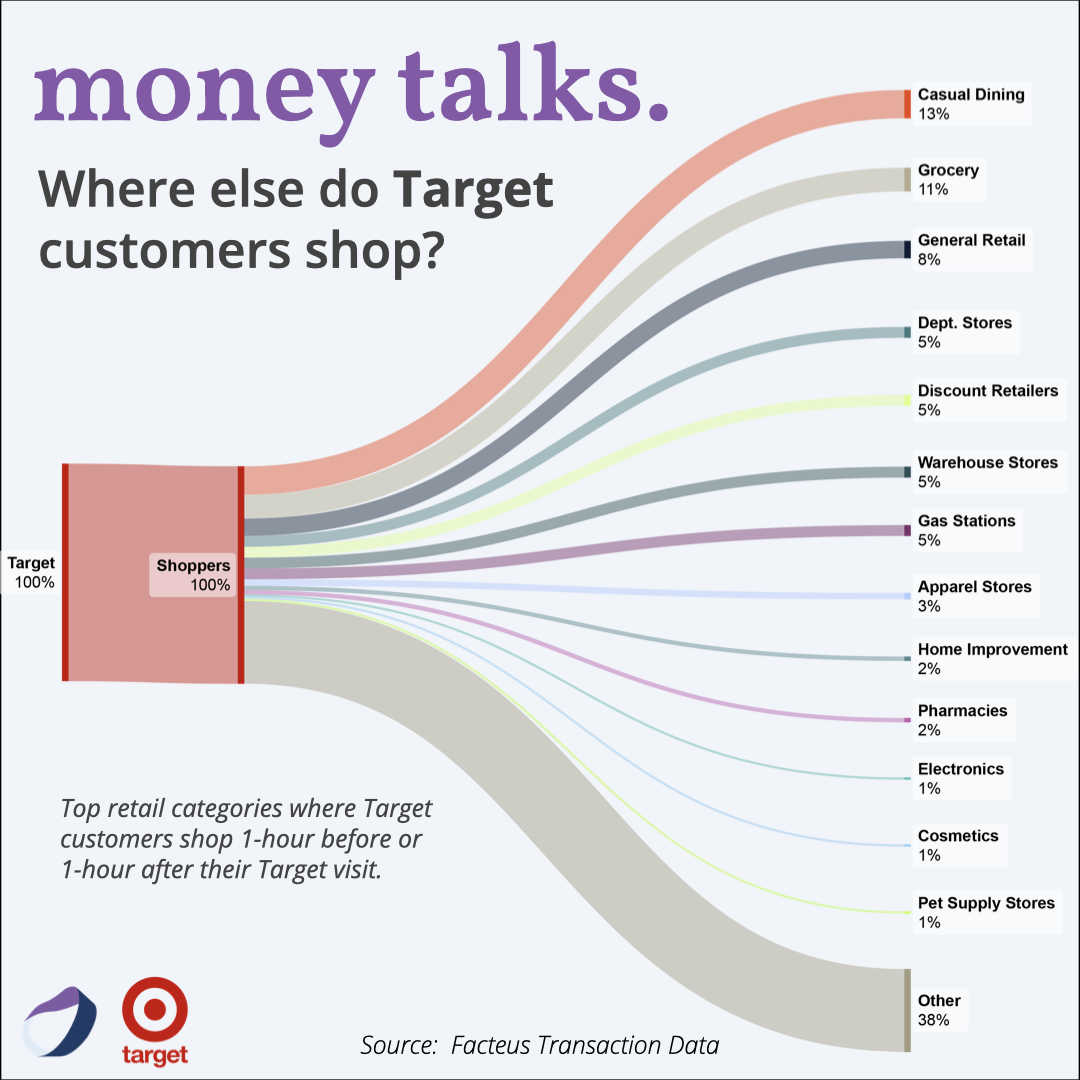Retail Transaction Data Unlocks More Reliable 360° View of Consumer Spending
What if brands had a “secret weapon” for understanding their customers and figuring out exactly what those consumers want?
What if consumer shopping trends could be exposed in near real-time, giving brands actionable insights to inform more strategic decisions?
And what if all it took was a new, alternative form of data that leaves the constraints of traditional data behind?
Believe it or not, all of that — and more — IS possible with retail transaction data.
Here’s how and why this type of alt data is becoming ever more crucial, cutting edge, and extraordinary in the retail industry and beyond.
Limits & “Gaps” Associated with Traditional Data
Traditionally, retail brands have relied on various data to learn about and engage with their customers, devise new campaigns, and identify revenue-boosting opportunities.
Traditional data sources, including (but not limited to) the following, have been helpful in decades past.
Still, they remain far from ideal for brands looking to beat out the competition, gain a deeper understanding of their customers, and stay miles ahead in 2024 and after.
Web Analytics Limitations
Useful for describing how an audience finds and interacts with a website, web analytics data can be limited by data sampling, attribution models, internet browsers, and more.
Additionally, even the best web analytics data won’t describe how an audience feels about a brand, exactly why they leave a website, and what could inspire that audience to stick around and take action. Those information gaps are usually “filled in” with guesswork, which can be extremely hit or miss.
Limits of Customer Surveys
Though useful in delving into consumer preferences and feelings, customer surveys as a traditional data source also come with some distinct limits.
For example, customer surveys are limited by consumers’ memories, the design of the questionnaire, and some inherent biases typically associated with a survey pool (i.e., those who opt out may have had remarkably different responses).
Crucially, a reliance on customer surveys will also never reveal insights about the shoppers who don’t participate in them.
That naturally can limit a brand’s ability to learn about its customer base, only exposing findings about those who engage — but keeping a brand in the dark about the customers who choose to opt out of surveys.
Cookie Tracking Data Limitations
As an effective way to get eyes on an audience’s user behavior, cookie tracking can hinge on users’ consent (opting in or out), as well as ad blockers and internet browsers.
Additionally, cookies and other first-party data cannot accurately track consumer behaviors across multiple devices and platforms, making it difficult, if not impossible, to personalize content and drive conversions.
How Retail Transaction Data Can Advance Branding Strategies, Consumer Insights & More
Overcoming many limits of traditional data sources, retail transaction data — including credit card transaction data — offers a more empirical and a more complete view of consumers, shopping trends, cross-shopping, and more.
In fact, where traditional data typically falls short or opens up room for guesswork (and oversights), retail transaction data provides a solution, delivering unequivocal insights about:
The products and/or services that consumers purchase from a specific brand or retailer
Consumer spending patterns and trends, both over time and across a particular retail sector (like home improvement centers, discount retailers, or big box stores)
Cross-shopping behaviors and correlations that can speak to lifestyle, spending trends by generation, and bigger-picture trends in the retail industry and the markets in general
Along delivering with those exceptionally useful and compelling insights, retail transaction data does so with:
Zero reliance on subjective information, consumer opt ins, self-reporting, hypotheses, and massive spreadsheets
Impeccable accuracy, spotlighting consumer spending and shopping behaviors in ways that traditional data simply can’t match
Why Does That Matter?
Brands that are embracing retail transaction data and that know how to leverage it are able to:
Better understand their customers.
More effectively design new offerings, sales, and marketing campaigns for optimal success
Recognize growth opportunities in real time, before their competitors, giving them the chance to be “first to bat,” even if they’re going up against industry titans (like Walmart)
More accurately predict evolving consumer preferences, sometimes even before customers are aware of their shifting desires
The following provides a more concrete example of how today’s brands are making the most of retail transaction data.
Retail Transaction Data Use Case
One rapidly advancing application of retail transaction data has been in the area of cross-shopping and retail partnerships.
Let’s look at a quick use case, with a quick serve restaurant (QSR).
In particular, a QSR could leverage retail transaction data to look at cross-shopping trends, discovering that their customers are also buying groceries and coffee.
With that knowledge, a QSR could then:
Develop new products to “satisfy” more of their customers’ needs: Maybe the QSR releases a new coffee beverage or opens up a new location in the same strip mall as a local grocery store.
Forge new partnerships: A QSR could partner with a local coffee house or grocery store for some limited-time deal or exclusive offerings.
Maximize market reach: New products and partnerships can put a QSR in front of wider and/or different audiences, enhancing its presence, reach, and exposure while cultivating more brand loyalty
The bottom line is that retail transaction data is indispensable for modern brands.
As a trailblazing tool and revolutionary resource, retail transaction data is putting new, small, growing, and well-establishing brands in a much stronger position to get an unparalleled, 360° view of their customers. That’s what can put them and keep them far ahead of the pack in today’s cutthroat, constantly progressing retail industry.









